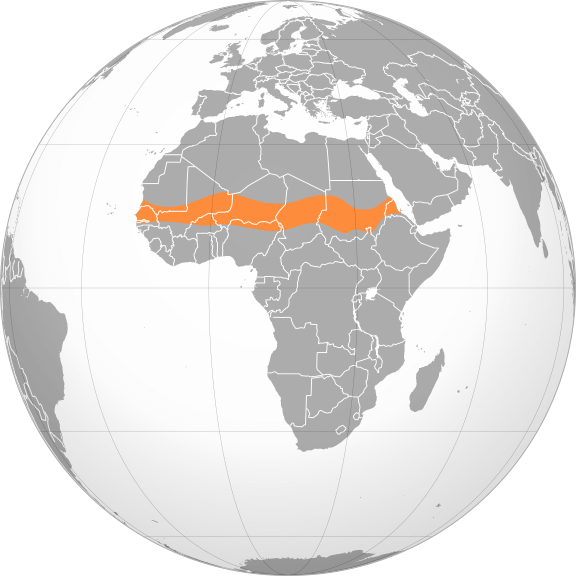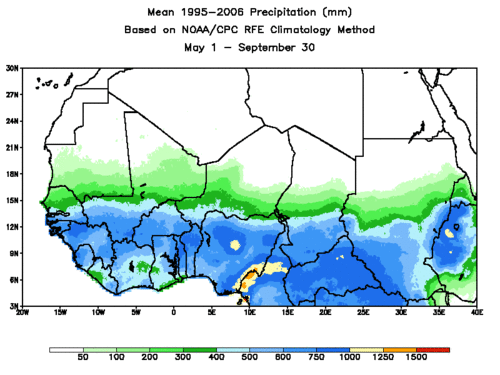The Sahel region of Africa, a semi-arid belt stretching across the continent, has been plagued by deep-seated instability and a surge in military coups in recent years. This crisis originates from several interconnected factors, leading to extreme humanitarian consequences and a major setback for democratic processes.

The Sahel is a semi-arid biogeographic zone of transition in Africa, whose name is derived from the Arabic word sāḥil (ساحل), meaning “coast” or “shore”, metaphorically referencing it as the southern “coastline” of the Sahara Desert.
Geographical Expanse of the Sahel Region:
The Sahel stretches across the African continent. From the Atlantic Ocean in the west to the Red Sea in the east. It forms a belt of variable width, generally considered to be between 300 to 500 kilometres (186 to 311 miles). Sahel separates the Sahara Desert to its north from the more humid Sudanian Savanna to its south. The region extends over an area of approximately 3 million square kilometres (1.16 million square miles) and traverses parts of numerous countries, including Senegal, Mauritania, Mali, Burkina Faso, Niger, Nigeria, Chad, Sudan, and Eritrea.

Meteorological Character and Köppen Classification:
The Sahel’s climate is predominantly classified under the Köppen system as Hot semi-arid (BSh). Its primary meteorological characteristic is a long, intense dry season followed by a short, unreliable wet season.

- Rainfall: The region experiences a single, brief rainy season, typically lasting from June to September, which is driven by the movement of the Intertropical Convergence Zone (ITCZ). Annual precipitation is low, averaging between 150-200 mm in the north and up to 600 mm in the south. This rainfall is highly variable from year to year and prone to significant droughts.
- Temperature: The Sahel is one of the hottest regions in the world, with high average temperatures year-round. Average daily temperatures typically range from 25°C to 30°C (77°F to 86°F), with maximum temperatures during the hottest months often exceeding 40°C (104°F).
Climate Change and Its Effects in the Sahel Region:
- The Sahel is a hotspot for climate change, which is manifesting through several geographical and meteorological impacts:
- Accelerated Warming: The region is experiencing a rate of temperature increase that is 1.5 times the global average.
- Increased Rainfall Variability and Extremes: While average rainfall patterns are shifting, the most significant impact is the increase in the frequency and intensity of extreme weather events. This includes more severe and prolonged droughts, as well as more intense and erratic rainfall events that can lead to destructive flooding and soil erosion.
- Desertification: Climate change, combined with anthropogenic pressures, is exacerbating the process of desertification, leading to the southward expansion of the Sahara Desert, land degradation, and a reduction in arable and grazing land.
Conflicts
In recent years, the Sahel region has been engulfed in conflicts, creating one of the world’s most severe and rapidly deteriorating humanitarian crises. Since the early 2020s, extremist groups affiliated with both al-Qaeda (primarily JNIM) and the Islamic State (IS), have expanded their operations across vast swathes of Mali, Burkina Faso, and Niger. This insurgency is compounded by a wave of political instability, marked by a series of military coups in these same three countries, which have led to the establishment of military juntas and the fracturing of regional and international counter-terrorism efforts. The withdrawal of French and other European forces, coupled with the suspension of these nations from regional bodies like ECOWAS, has created a security vacuum, which Russia-linked private military contractors have partially filled, further complicating the geopolitical dynamics. The conflict is not limited to extremist violence; it is deeply interwoven with long-standing inter-communal tensions over resources like land and water, which are now worsened by the impacts of climate change and weak governance, resulting in millions of displaced people and pushing the entire region to the brink of humanitarian catastrophe.
